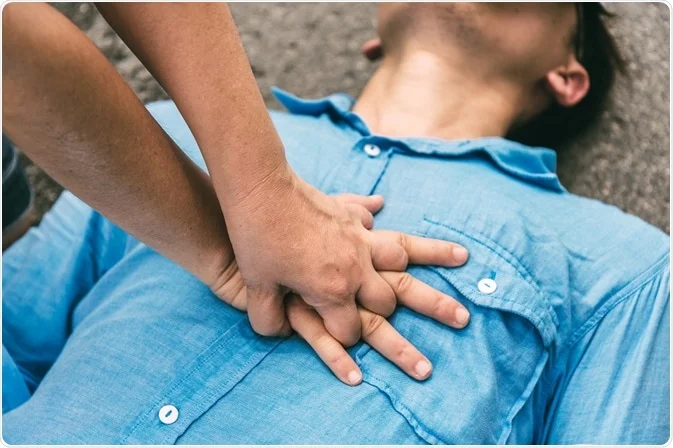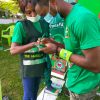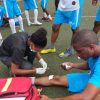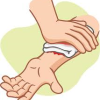Cardiopulmonary resuscitation (CPR) is a life-saving skill that is used especially in situations where a person’s breathing or heartbeat has stopped. Check out our article on checking for pulse: https://www.theambulancecompany.com/check-for-pulse
In this blog post, we will walk you through each step of performing hands-only CPR and CPR with rescue breaths. Before starting CPR, ensure to call for our emergency service on 09155556030, 09155556040.
Use Hands-only CPR if you’re untrained in performing CPR. If you have been trained in CPR including rescue breaths and feel confident, perform chest compressions with rescue breaths.
Hands-only CPR
Follow these steps to carry out a chest compression:
- Ensure the person is laid down on their back on a firm surface.
- Kneel next to the person
- Place the heel (Lower palm) of your hand on the breastbone at the center of the person’s chest between the nipples.
- Place your other hand over the one on the chest and interlock your fingers for firmness.
- Ensure you elbows are straight and your shoulders are directly above your hands
- Push down on their chest by channeling your body weight through your arms. Press down 5-6 cm(2- 2.5 inches) on their chest. Ensure you’re not pushing further than 6cm.
- With your hands still on their chest, release the compression and allow their chest to return to its original position.
- Repeat the compressions at a rate of 100-120 times per minute until an ambulance arrives. You can use a timer while counting the compressions to ensure you’re getting a minimum of 100 compressions per minute.
CPR with rescue breaths
- Follow the same guideline above but after 30 chest compressions, give 2 rescue breaths.
- To give rescue breaths, tilt the head of the person gently and lift their chin up with 2 fingers. Pinch the person’s nose with the aim of blocking airway then put your mouth over theirs, covering it firmly and blow air into it for about 1 second. Check that their chest rises and do this 2 times.
- Continue this cycle of 30 chest compressions and 2 rescue breaths until they show signs of recovery or an ambulance comes.
NOTE: Do not do this for infants less than 1 year of age.






